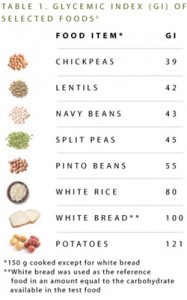 For years, diet researchers have suggested that a high-protein, low glycemic index diet may work best for losing pounds and maintaining a healthy body weight. Last week, the New England Journal of Medicine reported that while many people attempt a high protein, low glycemic diet, they may not understand exactly how the diet actually works.
For years, diet researchers have suggested that a high-protein, low glycemic index diet may work best for losing pounds and maintaining a healthy body weight. Last week, the New England Journal of Medicine reported that while many people attempt a high protein, low glycemic diet, they may not understand exactly how the diet actually works.
The glycemic index is a diet plan meant to lower insulin levels and insulin resistance, increase energy and lower stress. Initially developed to help diabetes patients maintain stable insulin levels, a high glycemic index food is above 70, while a medium food is from 55 to 70 and a low glycemic index food is below 55. Overall, the glycemic index refers to how fast carbohydrates are broken down in the body.
Foods that are broken down in the body rapidly tend to cause spikes in blood sugar that may alter hormones and increase feelings of hunger. Low glycemic index foods that break down slower, may leave a person feeling more satisfied.
It can be challenging for dieters because all foods on the glycemic index are not necessarily healthy. While dieters typically have no problem finding foods with high amounts of protein, like chicken and beans, carrots, for example, have a high glycemic index value (72) while chocolate is low (49).
While the diet can be confusing, it is reportedly good for weight loss because it follows logical principles: avoid fatty foods and added sugar, eat plenty of fruits and vegetables and choose whole grains over enriched grains.
Do you think the glycemic index is confusing?
